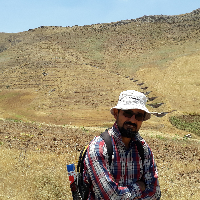Detection of sinkholes and landslides using deep-learning methods and UAV images
Landslides and sinkholes damage social, economic, and natural infrastructure. These processes have direct and indirect impacts on important infrastructure, including residential areas, and influence land use change and migration from rural to urban areas. Sinkholes and landslides occur when parts of a soil collapse mainly in more gentle or steeper slopes, which are often triggered by intensive rainfall. One of the main goals in sustainable land management is the identification and control of natural disasters, which on the one hand leads to the quantitative and qualitative improvement of production in the long term, and on the other hand, maintains the quality of the soil and prevents soil degradation. In order to manage better and more stable, it seems necessary to know how to change and identify different forms of erosion such as sinkholes and landslides. Sinkholes and landslides occur when parts of a soil collapse mainly in more gentle or steeper slopes, which are often triggered by intensive rainfall.
Recent advances in acquiring images from unmanned aerial vehicles (UAV) (UAV) and deep learning (DL) methods inherited from computer vision have made it feasible to propose semi-automated soil landform detection methodologies for large areas at an unprecedented spatial resolution. In this study, we evaluate the potential of two cutting-edge DL deep learning segmentation models, the vanilla U-Net model, and the Attention Deep Supervision Multi-Scale U-Net model, applied to UAV-derived products, to map landslides and sinkholes in a semi-arid environment, the “Golestan Province” (north-east Iran).
Landslides: The performance of the U-Net model shows that it has fewer false positives, but at the same time, it has missed many landslide cells. Meanwhile, the ADSMS U-Net model has performed better in detecting landslide cells, but it attributed many cases to incorrect predictions (which is explained by the low accuracy score). The best F1 score achieved for the ADSMS U-Net model is 0.68. Sinkholes: For all band combinations, the performances of ADSMS U-Net are better than those of the traditional U-Net model. The best overall scores by ADSMS U-Net were obtained when trained on the ALL data. Regarding the effectiveness of the various combinations evaluated in this study, we can observe the contradictory behaviors of the models. The traditional U-Net achieves the best performance using the RGB optical combination, while the ADSMS U-Net can leverage topographic derivative information and optical data, showing the best results with the ALL combination. Moreover, it is evident that the DSHC data alone provides the worst results for both models. In overall, the results show that the ability of ADSMS U-Net to predict landslides is closer to the ground reality compared to U-Net. This model identifies most of the landslides in the test sections. Also, for all combinations of sinkhole bands, ADSMS U-Net performs better than the U-Net model. The best overall scores were obtained by ADSMS U-Net when trained on ALL data.
Since this kind of soil erosion is the main origin of some major soil erosion including gully initiation and extension, applying new technology namely, UAV and deep learning is highly important and recommended. Our framework can successfully map landslides in a challenging environment (with an F1-score of 69 %), and topographical derivates from UAV-derived DSM decrease the capacity of mapping sinkholes and landslides of the models calibrated with optical data. Future research could explore the use of such an approach to map landslides and sinkholes over time to assess time-based changes in the formation and spread of natural hazards.
-
Investigating the Spatial Distribution and Interaction of Sand Dunes: A Case Study of Kalateh Mazinan Region
Mohammadjavad Yousefi, *, Alireza Rashki, Narges Kariminejad, Hamidreza Abbasi, Ali Mohammadian Behbahani
Desert Ecosystem Engineering Journal, -
Modeling Wind Erosion Via Google Earth Engine: A Case Study of Sabzevar City
Abdolhossein Boali, Narges Kariminejad *, Mohsen Hosseinalizdeh
Desert Ecosystem Engineering Journal,



